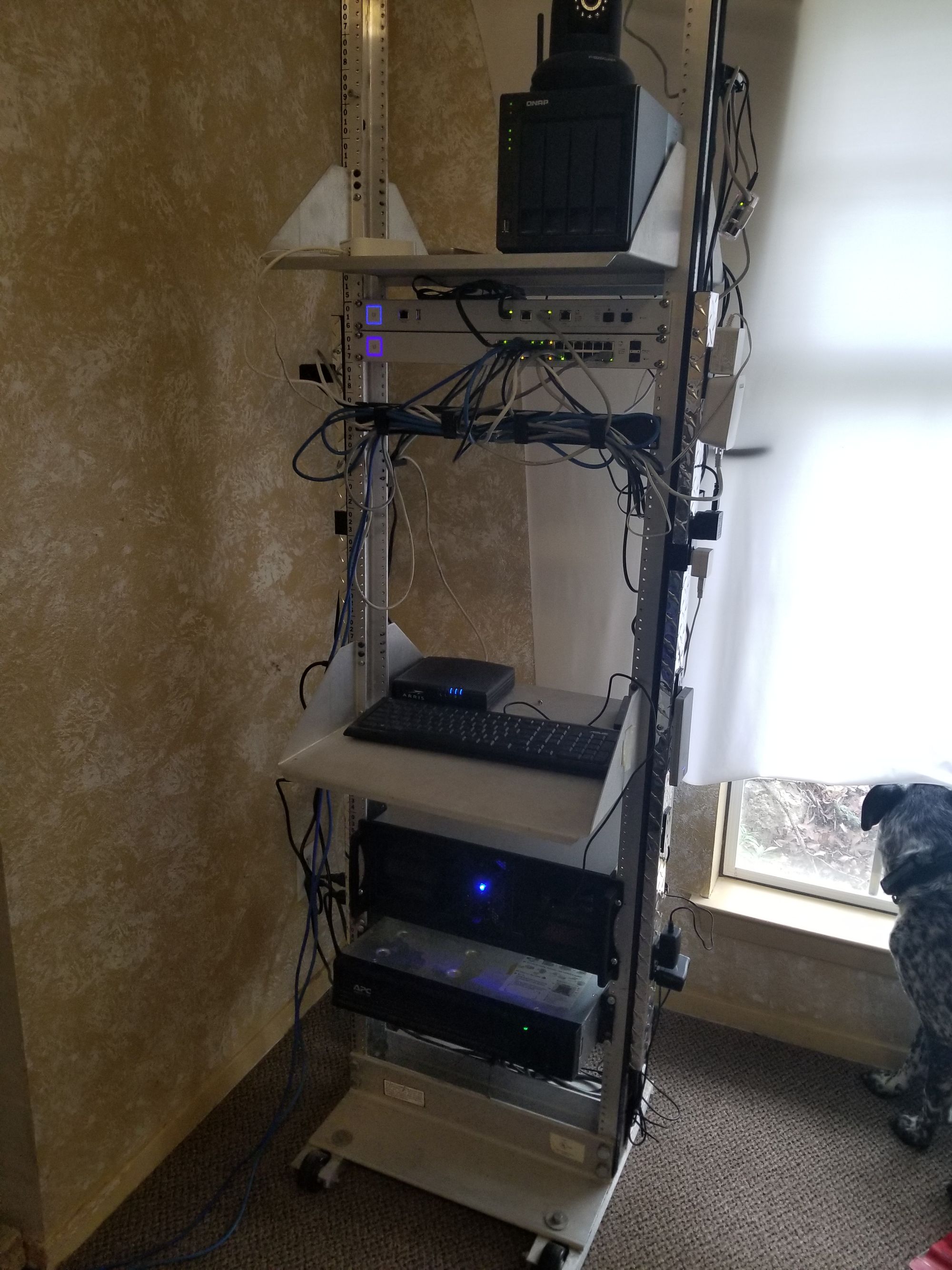Server Build Part 1 - Hardware

Using server resources from IaaS providers such as Digital Ocean are very convenient and sometimes necessary with services which can’t be hosted at home such as an e-mail server, but the true goal of this project is to be as self-sufficient as possible and host everything at home. There should be as little impact as possible if the connection to the Internet goes down.
I’ve posted previously about the new Unifi network gear which consists of a 24-port managed switch, the Unifi Security Gateway, and Unifi Access Points for the wireless network. This includes separate VLANs for end user devices, Internet of Things (IoT), Network of Thing (NoT), Guests, and now a DMZ. Well, it’s not really a DMZ in the sense that the devices have a public IP, but an isolated network which can’t reach the rest of the network in the event that a device is compromised by an outside attacker.
I have the QNAP TS-45+ which I’m currently running a couple of Docker workloads on (i.e. Home Assistant and the Unifi Controller) as well as serving as a geneal purpose NAS. It has two 4TB spinning drives which are mirrored and a single 1TB spinning disk leftover from my previous WD consumer NAS used as a scratch/temporary drive. It has plenty of freespace and it supports iSCSI. Maybe you can see where this is going?
This build start with being tipped off about a great deal at Walmart.com on an AMD Ryzen 9 3900X processor. This process has 12 cores/24 threads of execution at 3.8Ghz clock speed (boosts up to 4.6Ghz). I set about putting together a powerful, but quiet build in a rackmount server case.
Here’s what I came up with:
- AMD Ryzen 9 3900X
- CHENBRO Rackmount 4U chassis
- Cooler Master Masterwatt 750 Bronze power supply
- Gigabyte Adrus X570 Motherboard
- Samsung 970 EVO Plus NVMe M.2 SSD
- EVGA GeForce GTX 1650 Super
- 64GB Corsair 3200 RAM
The GeForce is probably overkill and it put me over my original budget, but I’m hoping to be able to run the GPU using passthrough PCIe into a Windows 10 VM to do my own self-hosted game streaming service. In addition, the NVMe is intended to serve as a fast disk for the operating system as well as a cache for the iSCSI LUNs hosted on the QNAP.
I finished the build in about a week and that included the time for the folks at Altex Electronics to order the specific memory that I wanted. I was pleasantly surprised how quiet it runs. The power supply and CPU cooler only kick on when under load and even then are still very quiet. The case fan was louder than I expected and I added a second stealth case fan, but it’s still much quieter than the fans on the Unifi gear.
Here is the finished product:

Part 2 in the Server Build series will cover the Operating System install.